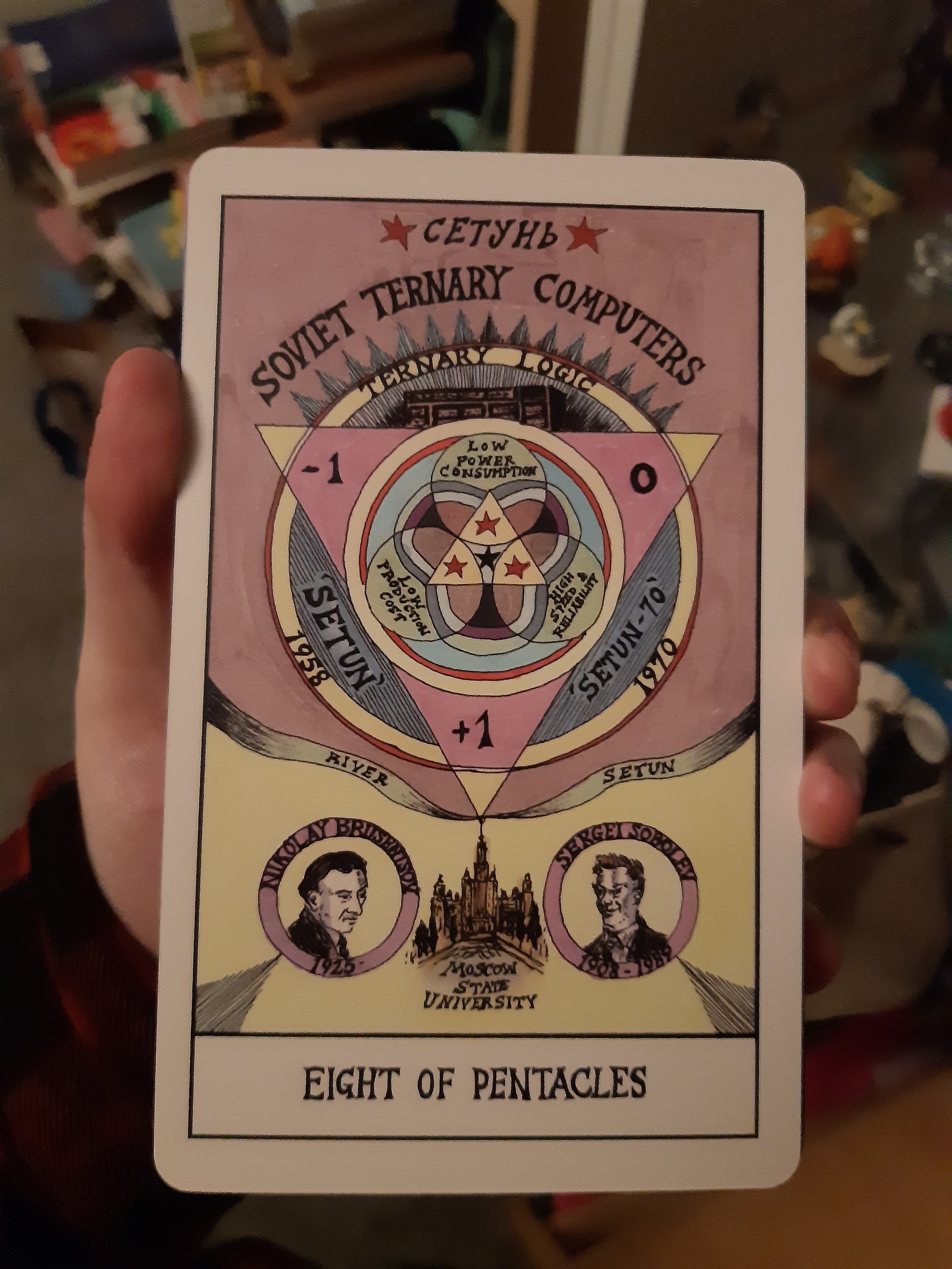March 29 - 8 of Pentacles

A card for learning, dedication and effort. Here it is an alternate path computing could have taken, the Soviet ternary computers.
I don't have a very technical or mathematical mind, even though I get really into scripting and programming once I understand the rules. When I found out, for example, that different societies had different base- numerical systems (other than base 10), no matter how many times people explained it or demonstrated it to me, I couldn't really make sense of how you could count or do math in a system like that, I'm so locked into the idea of 10s.
Similar to alternative protocols for the internet, I don't fully understand what the implications of ternary (rather than binary) computing would be in a practical sense. But it's very conceptually interesting. Has the binary nature of tech (where something either is, or is not) also spread to, within tech, how we categorize, analyze, measure success or failure? It's very amenable to capitalist metrics and also, well, every bad binary invites the mapping of all other binaries onto it. It can seem self-evident while being an entirely ideological process.
Not positive, not negative, but a third secret thing. The power of being able to say, no! Neither! Sometimes it feels like that, more than anything, is what's being taken away...